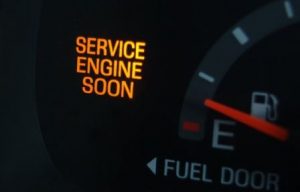— April 19, 2018

cloudhoreca / Pixabay
The very first step to getting paid is sending out your invoice. That’s obvious right. Now for the hard part – getting it paid. In a perfect world, your client will pay the invoice on time and you’re off to your next job. However, it’s never that straightforward.
While you can’t control your clients, you can definitely control how you manage your invoicing. More importantly, you need to be aware of common invoicing mistakes that inhibit you from getting paid on time(or at all). That said, here are four invoicing mistakes that you can easily avoid.
Not specifying the due date.
This is at the top of the list because it’s the first thing you need to think about. This is where you put your foot down. Failing to specify a due date on the invoice is a huge mistake.
When setting the date, make sure you are using clear terms. Often times, business owners use vague payment terms which often leads to confusion. Here are some examples:
- “Net 30” – This basically means the invoice should be paid in full within 30 days. However, it can be confusing for someone who isn’t business savvy.
- “Upon receipt” – This is just setting yourself up for disaster. You need to specific about a date. The client can simply say the invoice was never received, and you’re stuck without payment.
To reduce confusion you should always specify an exact date. For example, if you’re sending out an invoice on April 1st, say that it’s due no later than April 15th. This way, both you and the client are crystal clear on when it’s due.
Lacking detail on the line items.
Depending on what products or services you offer, you may need to get detailed on your line items. When you’re itemizing your services, it’s better to be overly descriptive than the latter. Ultimately, the client wants to be able to track and record what they’re paying for. The more detailed you can be about what’s delivered for what price, the better they’ll be able to do this.
The last thing you want is to have to email back and forth clarifying which services were delivered.
Refusing to go paperless.
Okay, let’s face it. Automation is here and it’s here to stay. When it comes to managing your finances, you need to use a digital accounting solution. If you’re old school, paper invoices and checks may feel the most “comfortable”, but it’s delaying your entire payment process drastically.
Most online payments platforms offer a suite of features like online invoicing and expense management that keep all your records organized and secure. Additionally, these platforms give your clients easy ways to complete payments. For example, you can send them a digital invoice which they can pay using a credit card, ACH, or even digital wallet transfer. The more ways they can pay, the better.
Forgetting to follow up.
Following up on an invoice is a very natural process. I say this because it pretty much happens every time you send out an invoice. People are rarely “eager” to pay invoices. In fact, they often hate it. That said, you’re going to have to follow up with your clients at least once. If you hesitate, then you’re just giving your client more reasons to delay.
If you’re using an online payments solution, then you can set-up automated follow-ups to your clients. Some solutions even let you customize your message for more personalization.
Invoicing isn’t rocket science. However, it can be a stressful situation if handled poorly. To kick things off on the right foot, make sure you avoid the four invoicing mistakes listed above.
Business & Finance Articles on Business 2 Community
(52)









